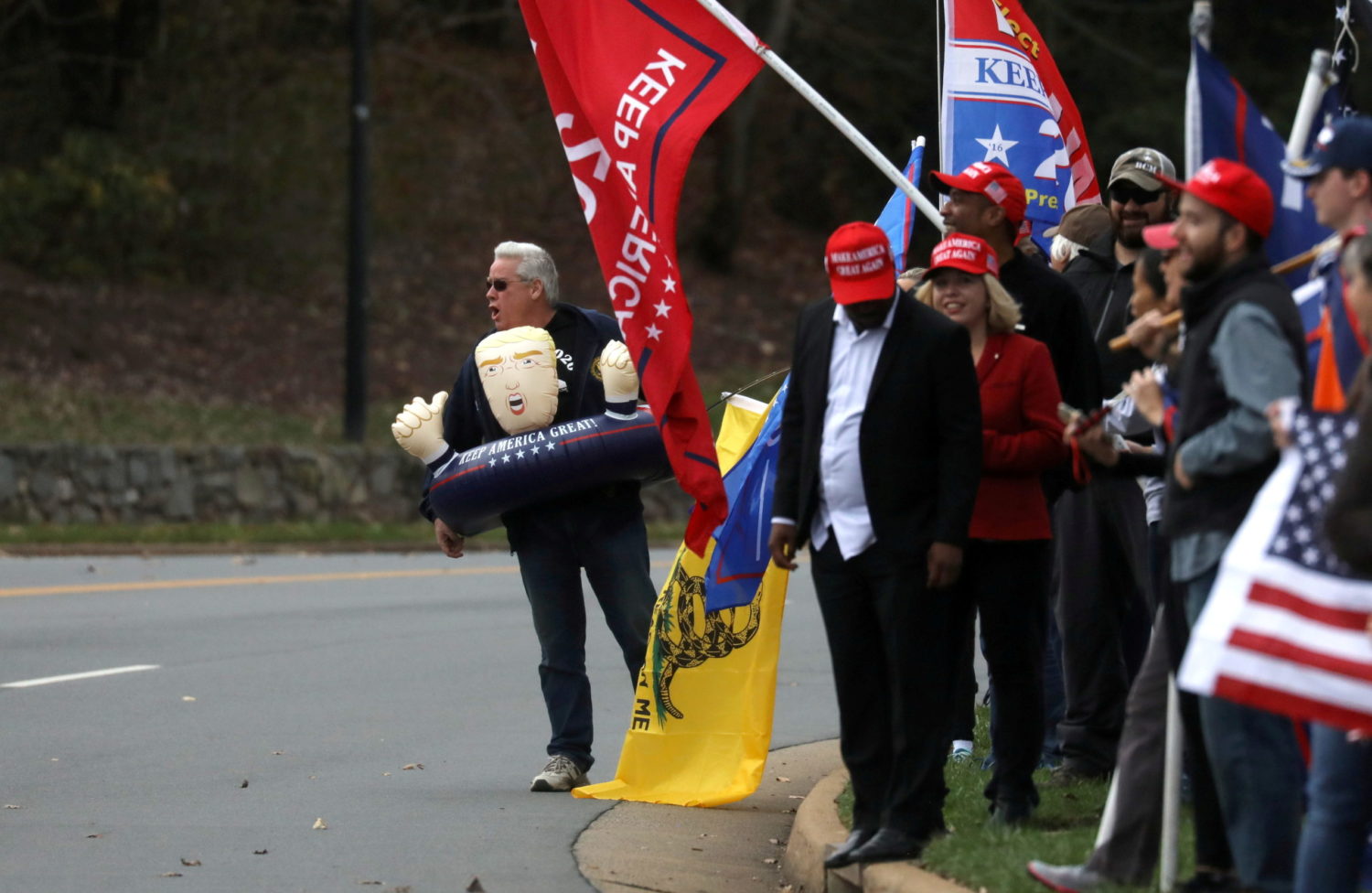
By Trevor Hunnicutt and John Whitesides
WILMINGTON, Del./WASHINGTON (Reuters) – President-elect Joe Biden on Monday will focus on reviving a pandemic-battered U.S. economy as he prepares to take office, while outgoing President Donald Trump has promised more lawsuits of the type that so far have failed to alter his election defeat.
With coronavirus cases surging, Biden will receive a briefing and give a speech in his home state of Delaware on rebuilding an economy that has suffered millions of job losses as the pandemic has killed more than 245,000 Americans.
Biden’s scientific advisers will meet this week with pharmaceutical companies developing vaccines to prevent COVID-19, a top aide to the president-elect said, in preparation for the logistical challenges of widespread vaccination after the Democrat takes office on Jan. 20.
Trump, a Republican, briefly appeared to acknowledge defeat on Sunday only to backtrack, saying on Twitter that he concedes “nothing” and repeating his unfounded accusations of voter fraud.
He later promised on Twitter to file “big cases showing the unconstitutionality of the 2020 Election,” even though he has made no headway with his legal challenges in multiple states so far.
Election officials from both parties have said there is no evidence of major irregularities. Federal election security officials have decried “unfounded claims” and expressed “utmost confidence” in the integrity of the elections, according to a statement last week by the lead U.S. cybersecurity agency.
LEGAL SETBACK
In another blow to Trump’s legal strategy, his campaign on Sunday dropped a major part of a lawsuit it had brought seeking to prevent Pennsylvania from certifying its results, narrowing the case to an issue affecting a small number of ballots. Biden won the state by more than 68,000 votes.
Biden beat Trump in the Nov. 3 election by the same 306-232 margin in the state-by-state Electoral College that Trump proclaimed a “landslide” when he won in 2016. The former vice president also won the national popular vote by at least 5.5 million votes, or 3.6 percentage points, with ballots still being counted.
Former President Barack Obama, a Democrat who campaigned against Trump, said it was past time for Trump to concede, and criticized Republicans who also refuse to accept the victory of his former vice president.
“When your time is up, then it is your job to put the country first and think beyond your own ego,” Obama told the CBS News show “60 Minutes” in an interview that aired on Sunday.
“I’m more troubled by the fact that other Republican officials who clearly know better are going along with this.”
The Senate Judiciary Committee, which is chaired by Republican Senator Lindsey Graham, one of Trump’s most loyal supporters, will hold a hearing on Tuesday titled: “Breaking the News: Censorship, Suppression and the 2020 Election.”
STILL NO CONCESSION
The Trump administration has still not recognized Biden as president-elect, preventing his team from gaining access to the government office space and funding normally provided to an incoming administration.
Biden’s top advisers said Trump’s refusal to begin a transition could jeopardize the battle against the virus and inhibit vaccine distribution planning.
The number of U.S. coronavirus cases passed 11 million on Sunday, up a million in a week and the fastest increase since the pandemic began.
Biden has promised to make the health crisis a top priority as president. Ron Klain, who will be White House chief of staff when Biden takes office, said Biden’s scientific advisers would meet with Pfizer Inc and other unnamed drugmakers this week.
Pfizer said last week its vaccine candidate had proved more than 90% effective in initial trials, giving hope that widespread vaccination in the coming months could help get the pandemic under control.
Moderna Inc said on Monday its experimental vaccine was 94.5% effective in preventing COVID-19, based on interim data from a late-stage clinical trial.
Other companies also are in advanced stages of developing promising vaccines.
Biden will also resume work on building his governing team. Although Klain, his first appointment, is a white man, the president-elect has vowed that his administration will “look like America” and be represented by women and minorities.
Some 46% of his transition staff are people of color and 52% are women, CNN reported, citing data provided by the transition team.
(Reporting by Trevor Hunnicutt in Wilmington and John Whitesides in Washington; Additional reporting by Susan Heavey, Jan Wolfe, David Shepardson, David Morgan and Daniel Trotta; Editing by Peter Cooney and Kevin Liffey)











